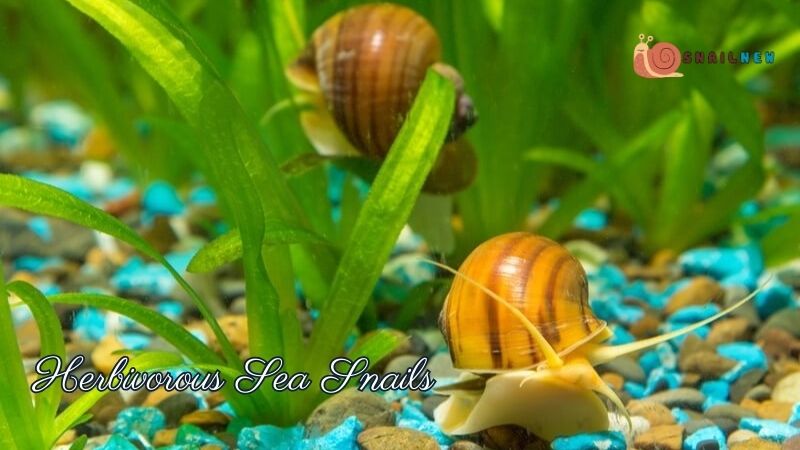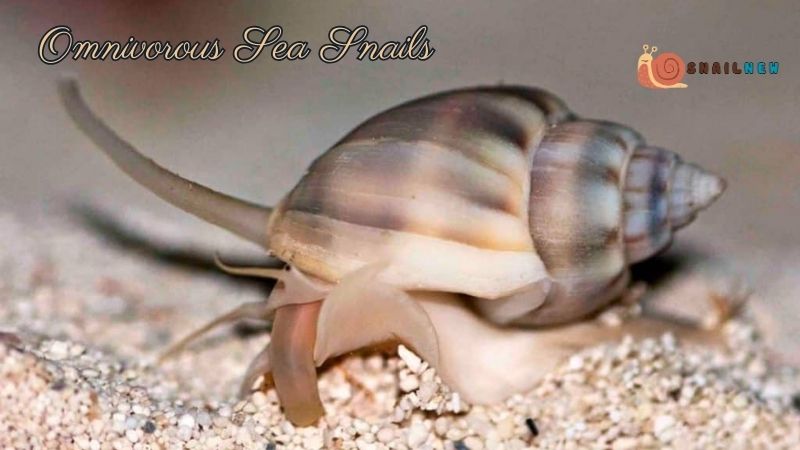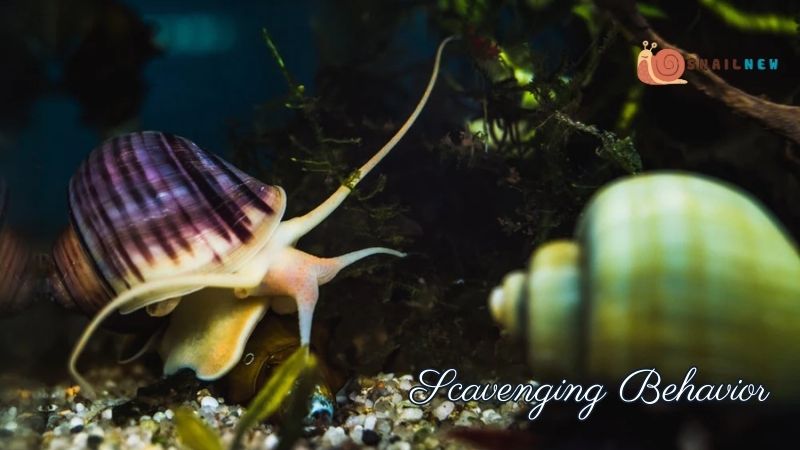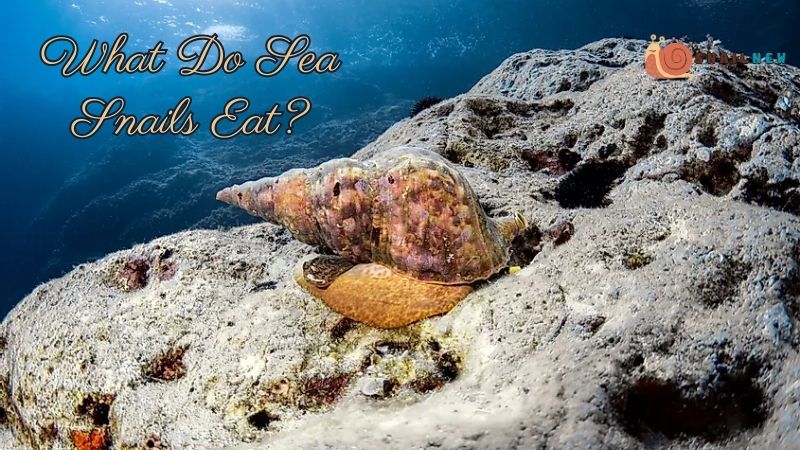In the vast expanses of the world’s oceans, sea snails, with their diverse shapes and sizes, reign as one of the most intriguing inhabitants. Their seemingly leisurely pace belies a complex culinary world, where dietary habits vary as widely as the ocean itself. In this comprehensive exploration, Snailnew delve deep into the culinary preferences of sea snails, answering the perennial question: What do sea snails eat?
Table of Contents
ToggleWhat Do Sea Snails Eat?
1. Herbivorous Sea Snails:
The herbivorous contingent constitutes a significant portion of sea snails, with adaptations geared towards marine vegetation consumption, thereby playing a crucial role in regulating algal populations and maintaining ecological balance. Among these snails are specialists like limpets and abalones, known for their distinctive feeding habits.

Limpets, characterized by their conical shells and rasping radulae, diligently graze on algae-covered rocks, showcasing finely tuned grazing behavior that effectively controls algae growth. Conversely, abalones, recognized for their stunning iridescent shells, primarily feed on kelp and other macroalgae. Their muscular feet enable them to cling to substrates while feeding, contributing to the balanced consumption of marine vegetation within their respective habitats. These herbivorous sea snails exemplify the intricate interplay between species and their environments in marine ecosystems.
2. Omnivorous Sea Snails:
While numerous sea snails primarily consume vegetation, some display a more versatile dietary behavior as opportunistic omnivores, ingesting both plant and animal matter. This adaptability allows them to flourish across varied marine habitats by capitalizing on accessible food sources, demonstrating their ability to adapt to changing environmental conditions and ensuring their survival in diverse ecosystems.

Among these omnivorous species, moon snails serve as prime examples. They prey on a variety of mollusks, including bivalves and other snails, while also supplementing their diet with algae and detritus. This versatility in diet allows them to capitalize on a wide range of food sources, contributing to their ecological success and exerting a significant influence on benthic communities through their feeding activities.
3. Scavenging Behavior:
In the vast expanses of the ocean, where food sources are often scarce, sea snails employ scavenging as a viable survival strategy. Feeding on decaying organic matter and carrion, these snails play a vital role in nutrient recycling and the preservation of ecosystem equilibrium. Their scavenging activities contribute to the efficient breakdown of organic material, facilitating nutrient cycling and supporting the overall health and stability of marine ecosystems.

Whelks, renowned for their acute sense of smell and adept scavenging abilities, emerge as prominent members of the scavenger community. They traverse the ocean floor in search of carrion, utilizing their specialized radulae to ingest decaying organic material. Acting as nature’s cleanup crew, they prevent the accumulation of organic debris, thereby safeguarding oceanic health and fostering a sustainable marine environment through their scavenging efforts.
4. Predatory Sea Snails:
Among the gastropod class, a formidable cohort of predators flourishes, showcasing adept hunting capabilities to procure live prey for sustenance. These carnivorous sea snails possess specialized anatomical features and hunting techniques that enhance their ability to efficiently capture and consume their targets. Their predatory prowess highlights the diversity of feeding strategies within marine ecosystems, underscoring the pivotal role they play in shaping food webs and maintaining ecological balance.
Cone snails, distinguished by their venomous harpoon-like radula teeth, stand out as renowned predators in marine ecosystems. They employ their venom to immobilize and subdue swift-moving prey, ranging from fish and worms to other mollusks. The predatory prowess exhibited by cone snails illuminates the diverse array of feeding strategies among sea snails, highlighting their role as dynamic predators shaping the dynamics of marine food webs and contributing to ecosystem balance.
5. Feeding Adaptations in Deep-Sea Environments:
In the unfathomable depths of the ocean, where sunlight struggles to penetrate, sea snails have evolved remarkable feeding adaptations to thrive in extreme conditions. These deep-sea specialists rely on detritus, marine snow, and chemosynthetic bacteria for sustenance, showcasing their resilience in the face of challenging environments.
Scaphopods, characterized by their slender, tubular shells, excel at sifting through sediment to uncover organic particles. Their specialized feeding apparatus enables them to extract nutrients from the detritus-rich environment of the deep sea, ensuring their survival in these harsh conditions. Furthermore, abyssal snails have established symbiotic relationships with chemosynthetic bacteria, obtaining nutrients from the oxidation of hydrogen sulfide—a testament to their adaptability and resourcefulness in exploiting the unique ecological niches found in the deep sea.
Conclusion:
From the sunlit shallows to the abyssal plains, sea snails traverse a varied gastronomic landscape, each species finely attuned to its ecological niche. Whether they’re grazing on algae, scavenging carrion, or actively hunting live prey, sea snails fulfill crucial roles in marine ecosystems. The question of what do sea snails eat unveils a complex tapestry of dietary preferences and feeding adaptations, underscoring the significance of these enigmatic creatures in upholding oceanic equilibrium and biodiversity. Their diverse diets contribute to the intricate balance of marine life, highlighting their indispensable role within aquatic environments.
Related Posts:
- Exploring the Diverse Types of Sea Snails: A…
- Do Turtles Eat Snails? Exploring the Dietary Habits…
- Exploring the Aquatic Appetite: Do Goldfish Eat Snails?
- A Comprehensive Guide to Food for Snails Aquarium
- Exploring the Lifespan of Snails: How Long Do Snails Live?
- Exploring the Aquatic Realm: Can Snails Breathe Underwater?


